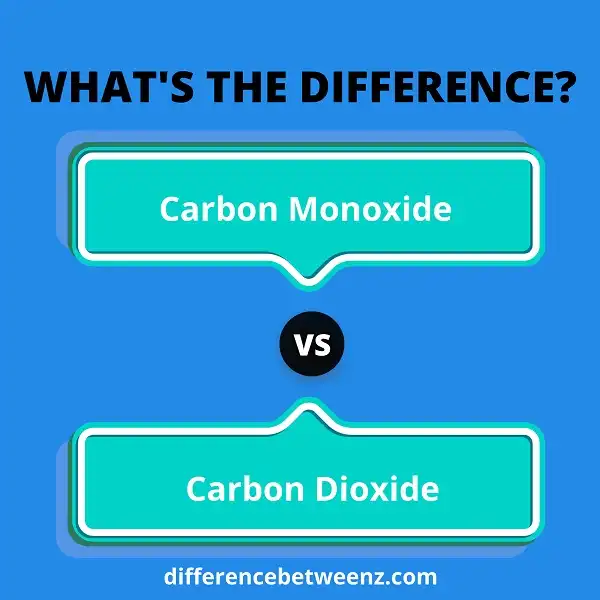Both carbon monoxide and carbon dioxide are gases, but they have different effects on the body. Carbon monoxide is a poisonous gas that can be deadly, while carbon dioxide is a greenhouse gas that contributes to climate change. In this blog post, we will explore the differences between these two gases. We will also discuss how they are both produced and how they can be dangerous. Stay safe by learning about the dangers of these gases!
What is Carbon Monoxide?
- Carbon monoxide is a gas that is naturally present in the air. It is produced when Carbon (C) in fuels such as natural gas, gasoline, oil, propane, and wood burns incompletely. Carbon Monoxide (CO) is odorless, colorless, and tasteless, but it can be deadly.
- When too much CO builds up in the blood it prevents oxygen from getting to vital organs such as the heart and brain. The body tissue of people and animals who are exposed to high levels of CO can die quickly. Carbon monoxide poisoning can occur quickly and without warning.
- People who are sleeping or drunk can die from carbon monoxide poisoning before they have any symptoms. That is why it is important to have working Carbon Monoxide detectors in your home or business if you burn fuel indoors. If you think you might have carbon monoxide poisoning, get into fresh air immediately and call 9-1-1 or your local poison control center.
What is Carbon Dioxide?
- Carbon dioxide is a colorless, odorless gas that is essential for life on Earth. Plants use carbon dioxide to create oxygen during photosynthesis, and animals breathe in oxygen and exhale carbon dioxide.
- Carbon dioxide is also present in the atmosphere, which helps to regulate the Earth’s temperature. Carbon dioxide is produced naturally by animals and plants, as well as through human activities such as burning fossil fuels.
- Too much carbon dioxide in the atmosphere can cause problems such as climate change and ocean acidification. Carbon dioxide can be removed from the atmosphere through natural processes such as photosynthesis and respiration, as well as through technology like carbon capture and storage.
Differences between Carbon Monoxide and Carbon Dioxide
- Carbon monoxide (CO) and carbon dioxide (CO2) are both colorless, odorless gases that can be dangerous to human health. Carbon monoxide is produced when fossil fuels are burned, and it can cause serious health problems when inhaled.
- Carbon dioxide is also produced when fossil fuels are burned, but it is not harmful to human health at normal levels. Carbon dioxide is actually essential to human life, as it is used by plants for photosynthesis.
- The main difference between carbon monoxide and carbon dioxide is that carbon monoxide is poisonous while carbon dioxide is not. Carbon monoxide can cause headaches, dizziness, nausea, and even death, while carbon dioxide poses no threat to human health. Because of this, it is important to be aware of the dangers of carbon monoxide and take steps to prevent exposure.
Conclusion
Carbon dioxide and carbon monoxide are both gases that are emitted from various sources. However, there are several key differences between the two compounds. CO is a colorless, odorless gas that can be deadly in high concentrations, while CO2 is a colorless gas with a slightly acidic smell. Additionally, CO is highly poisonous and can quickly lead to death, while CO2 is less harmful and only causes minor irritation in high doses. Finally, while both gases are dangerous to breathe in, carbon dioxide dissipates more quickly than carbon monoxide making it less likely to cause long-term health problems.


